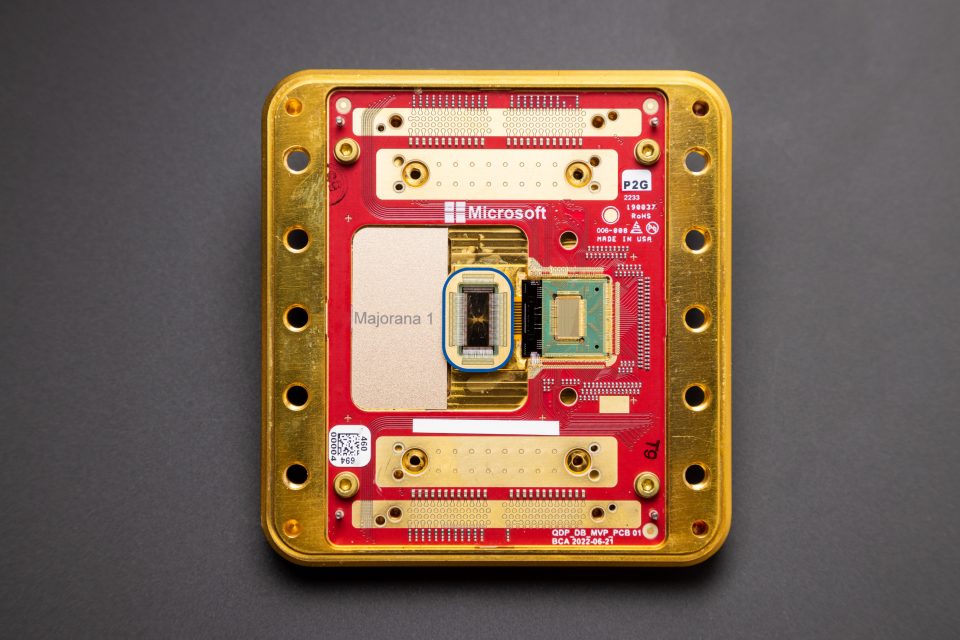Meet Microsoft's Majorana 1 - The Quantum Leap You've Been Waiting For!
 About a month ago Microsoft introduced their new quantum computing chip Majorana 1. Quantum computing sounds like something straight out of sci-fi: mysterious machines promising mind-boggling speed and solving problems impossible for even the fastest supercomputers today. And guess what? Microsoft's recent announcement of the Majorana 1 chip might just turn that dream into reality!
About a month ago Microsoft introduced their new quantum computing chip Majorana 1. Quantum computing sounds like something straight out of sci-fi: mysterious machines promising mind-boggling speed and solving problems impossible for even the fastest supercomputers today. And guess what? Microsoft's recent announcement of the Majorana 1 chip might just turn that dream into reality!
So, what's the buzz about Majorana 1?
The Majorana 1 isn't just any quantum chip; it's the world's first topological quantum chip. Unlike traditional quantum computers, which rely on atoms, ions, or photons to hold quantum information, the Majorana 1 takes a completely new approach. Imagine storing information not in particles themselves, but spread across the surface of a material, almost like tying a knot in a rope. No matter how you wiggle or twist that rope, the knot stays intact. This clever trick helps protect quantum data from noise and errors that usually disrupt quantum computations.
What's the problem with current quantum computers?
Quantum computers today are incredibly fragile. A tiny vibration, a little heat fluctuation, or even a stray particle can collapse the delicate quantum state, ruining the whole computation. To avoid this, quantum setups currently operate at temperatures colder than deep space, shielded from every bit of external noise possible. Yet, errors still creep in, requiring extensive error correction, making these systems gigantic and incredibly challenging to scale.
Microsoft's Clever Fix: Topological Quantum Computing
Enter Microsoft’s Majorana 1 chip! Using something called "topological quantum computing," Microsoft found a way to distribute quantum information across a special semiconductor-superconductor material. This technique creates unique particles known as Majorana particles, which are super weird, each one is its own antiparticle (think of a particle that's its own opposite, sounds wild, right?).
These Majorana particles pop up at both ends of tiny wires on the chip. Quantum information isn't trapped in a single particle but spread out between these two ends. This means even if some interference disrupts one side, the quantum information stays safe. It's like hiding pieces of a puzzle at opposite ends of the house, losing one won't destroy the whole picture.
Why This is a Big Deal
Traditional quantum computers need thousands or even millions of quantum bits (qubits) just for error correction, making them massive and complex. But the Majorana 1’s built-in error protection dramatically reduces this need. Suddenly, building scalable quantum computers becomes realistically achievable.
The Road Ahead: From 8 to a Million Qubits
Currently, the Majorana 1 chip has just 8 qubits small, yes, but mighty. It's not about quantity; it’s about quality. These qubits are incredibly stable, meaning every step forward is a giant leap towards practicality. Microsoft's next step? Scaling from 8 qubits to a million, a task they think is now an engineering challenge rather than a scientific impossibility. We could see powerful, reliable quantum computers within just a few years!
Why Should You Care?
Quantum computers could revolutionize chemistry, material science, medicine, and even how we tackle climate change. They excel at simulating complex chemical reactions precisely, something that current computers struggle with. This precision could unlock new medicines, eco-friendly materials, and solve puzzles we haven't even thought of yet.
Exciting, But Stay Grounded
Not everyone is completely convinced just yet. Microsoft faced setbacks in the past, including a major paper retraction in 2021. Some physicists remain cautious, demanding further evidence of practical qubit performance. But if Microsoft gets this right and they’re confident they have it could be one of humanity's most significant scientific breakthroughs.
Final Thoughts
The Majorana 1 chip marks the start of a thrilling new quantum chapter. Sure, quantum computing can feel complicated, but at its core, it's a brilliant new way humans challenge what's possible. It's about turning the "impossible" into reality one quantum leap at a time!
Stay curious, stay excited, and keep an eye on this quantum space. The future just got a whole lot more interesting!